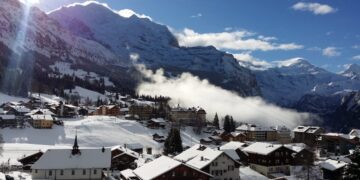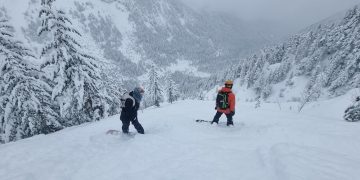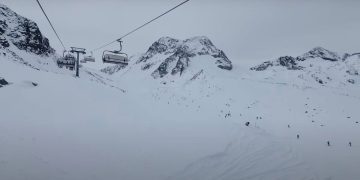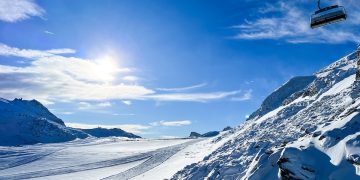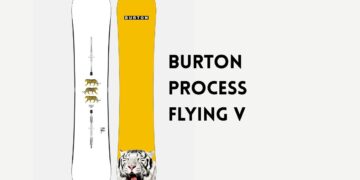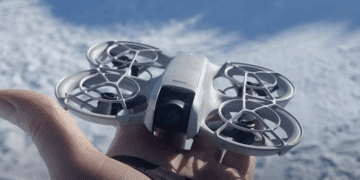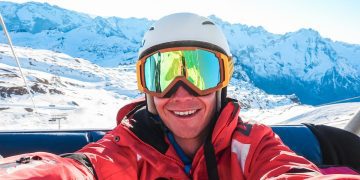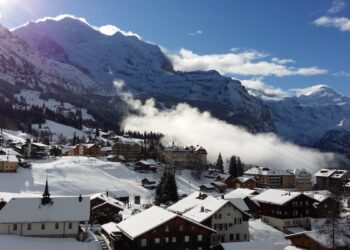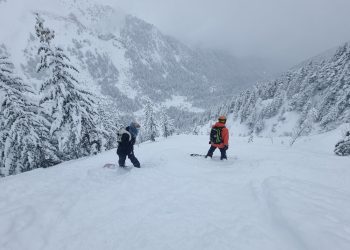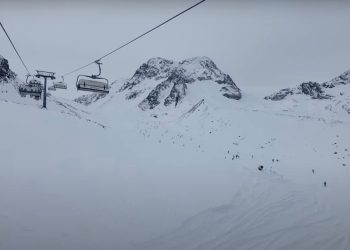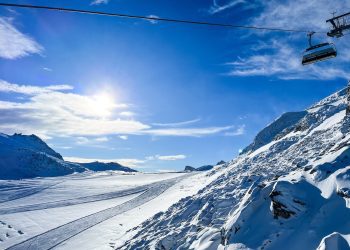Anyone who has ridden on a snowboard or skis knows that there are different types of snow. In fact, often you can find yourself riding five different types of snow in one day.
But what are the different types of snow? Do they affect your ski or snowboard experience, and how can you best ride each type of snow?
Stay tuned, we’re gonna answer all your snow riding related questions.
How Can Snow Be Different?
Of course fresh snowfall is one thing, but as the day progresses, or over time, the composition of snow changes.
In fact, the texture, moisture content, and temperature of snow can vary significantly, leading to different types of snow. This leads to the formation of diverse surfaces on the slopes, often in the same location and on the same day.
Factors that can influence the formation of unique snow conditions include:
- Temperature
- Wind
- Humidity
- Altitude
- Traffic
All of these elements affect the snow’s crystal structure and cohesion, which in turn, impact the riding experience.
Let’s dive into the five types of snow commonly encountered on the slopes and learn how to ride them like a pro.
Powder Snow
Powder snow, often regarded as the gold standard for skiing and snowboarding enthusiasts, is characterized by its light, fluffy texture, and low moisture content. This type of snow forms in cold temperatures when snowflakes retain their individual form, creating a landscape of pristine and untouched snow. Every skier and snowboarders dream basically…
Fresh snowfall will form powder snow if there is ample snowfall, and providing the temperature is low enough for the snow to settle without melting. However, just because there has been fresh snow, this doesn’t always mean powder. Elements such as additional rain, sunshine or high winds can affect the quality of the pow.
However by contrast, you can also be riding powder snow a few days after fresh snowfall. This is usually if the temperature and weather has remained consistent and you find some hidden backcountry or area with little ski traffic.
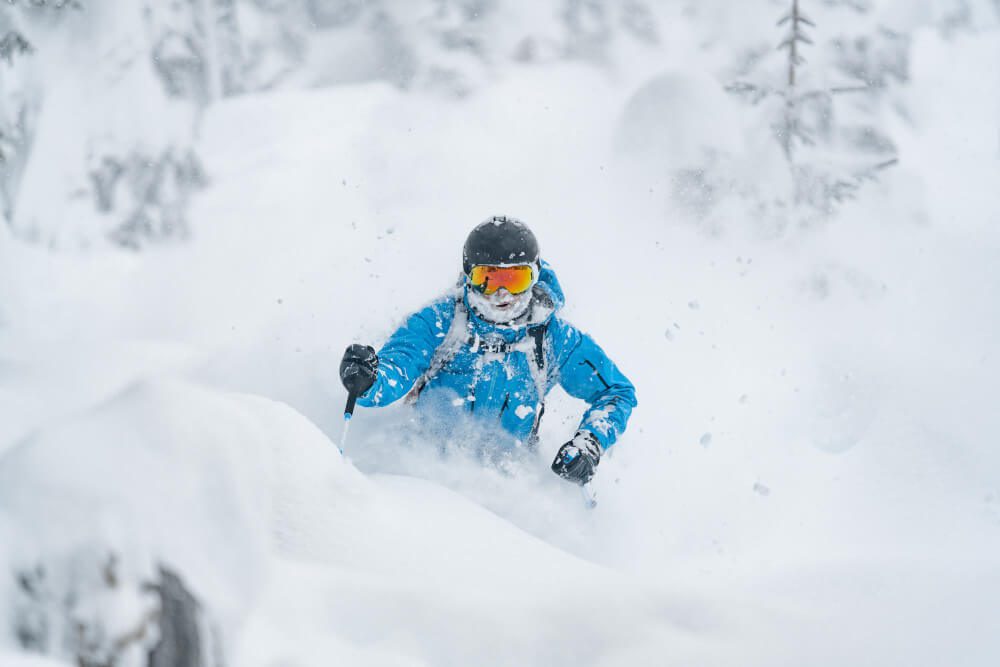
How to Ride Powder Snow
Riding through powder snow can make you feel like you’re floating on a cloud. However riding powder snow is a little different to riding other types of snow, such as groomed pistes. And when riding powder snow, you do want to know how to stay moving, as falling over can be a hassle if you find yourself in deep powder.
So, to ensure a smooth and enjoyable ride in powder snow, follow these tips:
- Weight Distribution: Shift your weight slightly to the rear when skiing or middle while snowboarding, allowing the skis’ or snowboard’s nose to rise above the powder. This prevents you from digging into the snow and allows you to maintain speed.
- Keep Your Speed: Maintain a consistent speed, as riding too slow may cause you to sink into the snow, making it difficult to maneuver.
- Stay Relaxed: Keep your body relaxed and make fluid, natural movements. Engaging in short, quick turns is crucial for skiing through powder snow, while snowboarders should use a smooth, swooping motion.
- Upgrade Your Gear: Use wider and longer skis or snowboards to increase surface area, which helps stay afloat on fluffy powder.
Riding powder is often seen as the gold standard for skiers and snowboarders, and if you get a powder day you’ll hear everyone getting excited. Whether you ski or snowboard, make a point of venturing into the off-piste sections on a powder day if you can…
We rate Nitro for excellent powder riding snowboards.
Crud Snow
Crud snow refers to snow that has already been ridden on forming a rough and inconsistent surface. This type of snow often occurs after a powder day when tracks have been carved into the fresh snow by many skiers and snowboarders, and piles or layers of snow form unevenly on the slope.
Busy ski slopes might form moguls too, which are large bumps on the piste. These can be great for popping a few jumps, or for slaloming down a hill.
While ‘crud’ might sound like a bad thing, we think this can be fun terrain to ride.
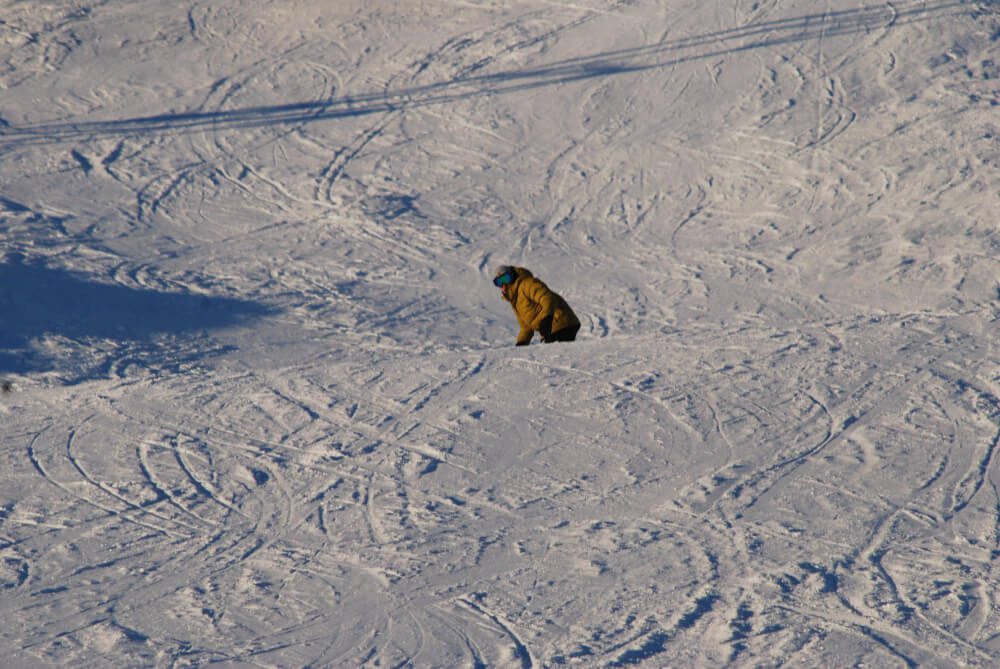
How to Ride Crud Snow
Crud snow can be challenging to navigate, especially for beginners. But as with all types of snow, it offers options for different types of riding. One thing is that crud snow can be a little slower, and offer some obstacles, such as hidden bumps, dips, icy patches or even slush.
To conquer crud snow effectively, adhere to these tips:
- Be Confident: Riding crud snow demands confidence in your ability and equipment. Use big, powerful movements to maintain control over your skis or snowboard. You’ll need to be able to confidently link turns and even know how to pop a jump or side hit.
- Weight Shift: Focus on maintaining an even weight distribution, which aids in balance and agility.
- Absorb Impact: Keep your knees slightly bent and flexible, allowing you to absorb the terrain’s inconsistencies and continue to ride smoothly.
- Stay Committed: Choose a line and remain committed to it, avoiding sudden changes in direction to maintain control and momentum.
Crust Snow
Crust snow is characterized by a thin layer of ice or firm snow on the surface of a softer layer underneath. This is usually powder or fresh(ish) snow that has melted or had some rain on top. Crust snow can also sometimes form in areas hidden from the sun, if there has been a bit of freeze-thaw conditions or if it snows at the end of a day and then freezes overnight.
This type of snow can be challenging to ride on, as the crust layer can easily break, making it difficult to maintain traction and balance.
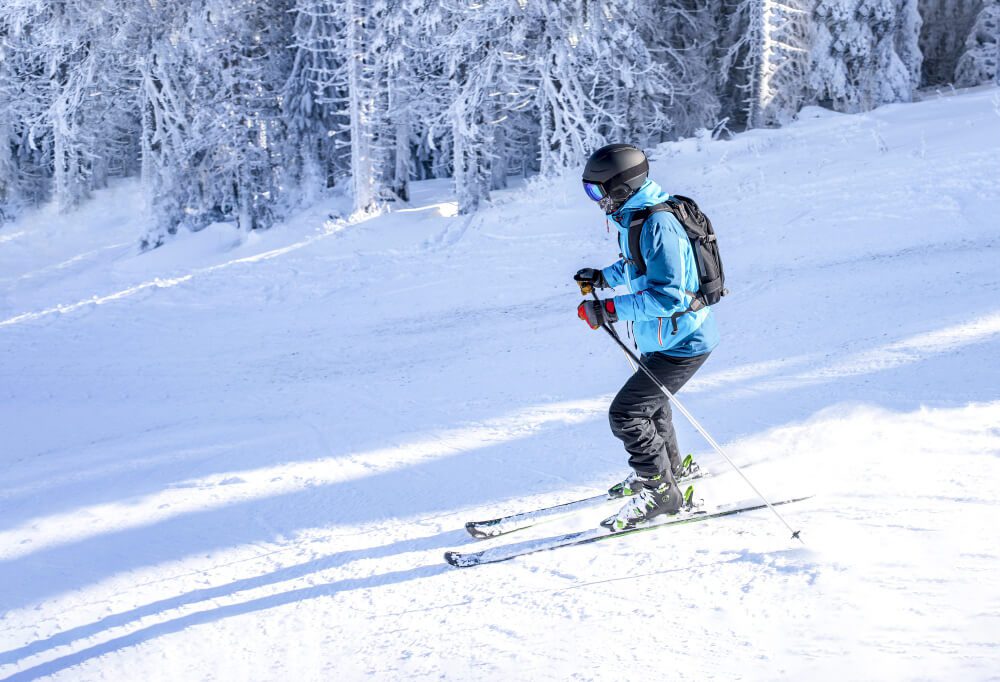
How to Ride Crust Snow
Riding on crust snow demands a blend of skill and perseverance. Use these tips to make the most out of your crust snow experience:
- Choose the Right Gear: In crust snow conditions, use sharp-edged skis or snowboards, and poles with larger baskets can be beneficial.
- Weight Distribution: Distribute your weight evenly over your skis or snowboard, and make small skiing turns or snowboard turns while applying consistent pressure to maintain control.
- Stay Smooth: Keep your movements fluid and avoid abrupt weight shifts or turns to prevent breaking through the crust layer.
- Adapt Your Style: Adjust your skiing or snowboarding technique to the specific type of crust snow you encounter, be it breakable or supportable crust.
Icy Snow
Icy snow is created when the snow’s surface is compressed and melts due to warm temperatures, freezing into a more solid form when the temperature drops again. Contrary to popular belief, this is not ‘ice’ in the traditional sense, as in this is not a smooth and glassy surface. Icy snow normally refers to the fact that the snow lacks the more granular or powder consistency to make it easy to ride.
Skiing or snowboarding on icy snow can be a daunting and slippery experience, often resulting in minimal grip and control.
This is often the kind of snow that forms in busy ski resorts that haven’t been dusted or pisted recently, and have frozen overnight. It can also be when fresh snowfall occurs, followed by a warmer spell followed by a temperature drop (typically overnight). You’ll often find this type of icy snow on shaded runs (ie. north facing runs).
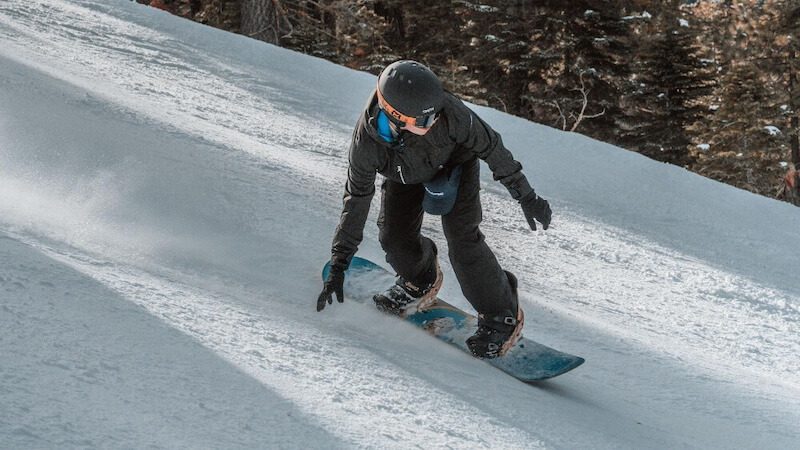
How to Ride Ice Pistes
To better navigate icy snow, follow these recommendations:
- Keep Your Edges Sharp: Ski edges with a proper tune are essential for gripping icy surfaces. Snowboarders should similarly ensure that their board edges are well-maintained.
- Stay Balanced: Maintain a forward, centered stance, with your weight centered over your skis or snowboard to improve grip.
- Use Delicate Movements: Avoid large, aggressive turning motions and utilize smaller, more delicate movements while skiing or snowboarding on icy surfaces.
- Be Cautious: Keep an eye out for ice patches on the slope, and adjust your speed as necessary to maintain control.
Generally speaking, unless you’re an expert skier or snowboarder, you should ride ice slowly and with care. Riding ice can be fun, but it’s often very challenging, and a wrong move can result in an accident. So stay safe!
Slushy Snow
Slushy snow is characterized by melting, wet snow due to warmer temperatures and direct sunlight. Generally found during spring skiing or at lower elevations, this type of snow can present challenges in terms of speed, control and stability.
While it is softer, slush snow can be quite good for beginners looking to ride a surface that isn’t too challenging. For advanced riders, slushy snow can be kinda frustrating because its slow and, well, the opposite of riding powder.
With that being said, riding any snow is better than riding no snow. And a late season ski break might mean a compromise with lovely bluebird days, but mostly slushy conditions.
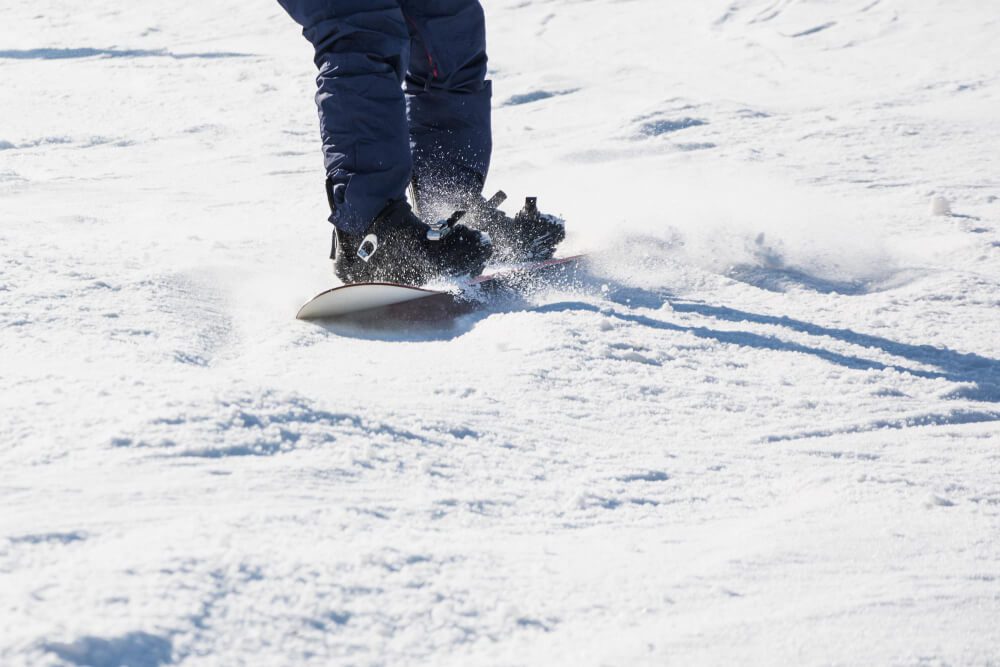
How to Ride Slushy Snow
Chances are that you’ll encounter slushy snow at some point during a ski trip. It can often affect the return home slopes at the end of the day, or even occur on popular pistes when the sun comes out. To effectively ride this type of snow, you’ll need to:
- Be Decisive: Approach slushy snow with confidence by making powerful, fluid turns to maintain balance and momentum.
- Upgrade Your Gear: Wider skis or snowboards can help you float on the wet snow and avoid sinking.
- Leaning Forward: Maintain a forward, aggressive stance to power through slushy patches and maintain control.
- Stay Aware: Keep a close eye on the slope and be prepared to adjust your technique as needed, as slushy snow conditions can change rapidly.
When to find the best ski or snowboard conditions
The best conditions for skiing and snowboarding can occur throughout the winter season, making it hard to say when is best for powder and when to avoid slush or ice. I’ve ridden powder in March, and Ice in December, so it just goes to show, you literally never can tell.
Check out our guide: when is the best time to ski the Alps?
The best idea is to just book your ski or snowboard trip, and ride what you get.
As a general rule, the early season snowfall is going to be the best for untouched powder.
Later in the season as we see more springlike weather, you’re more likely to encounter slush.
